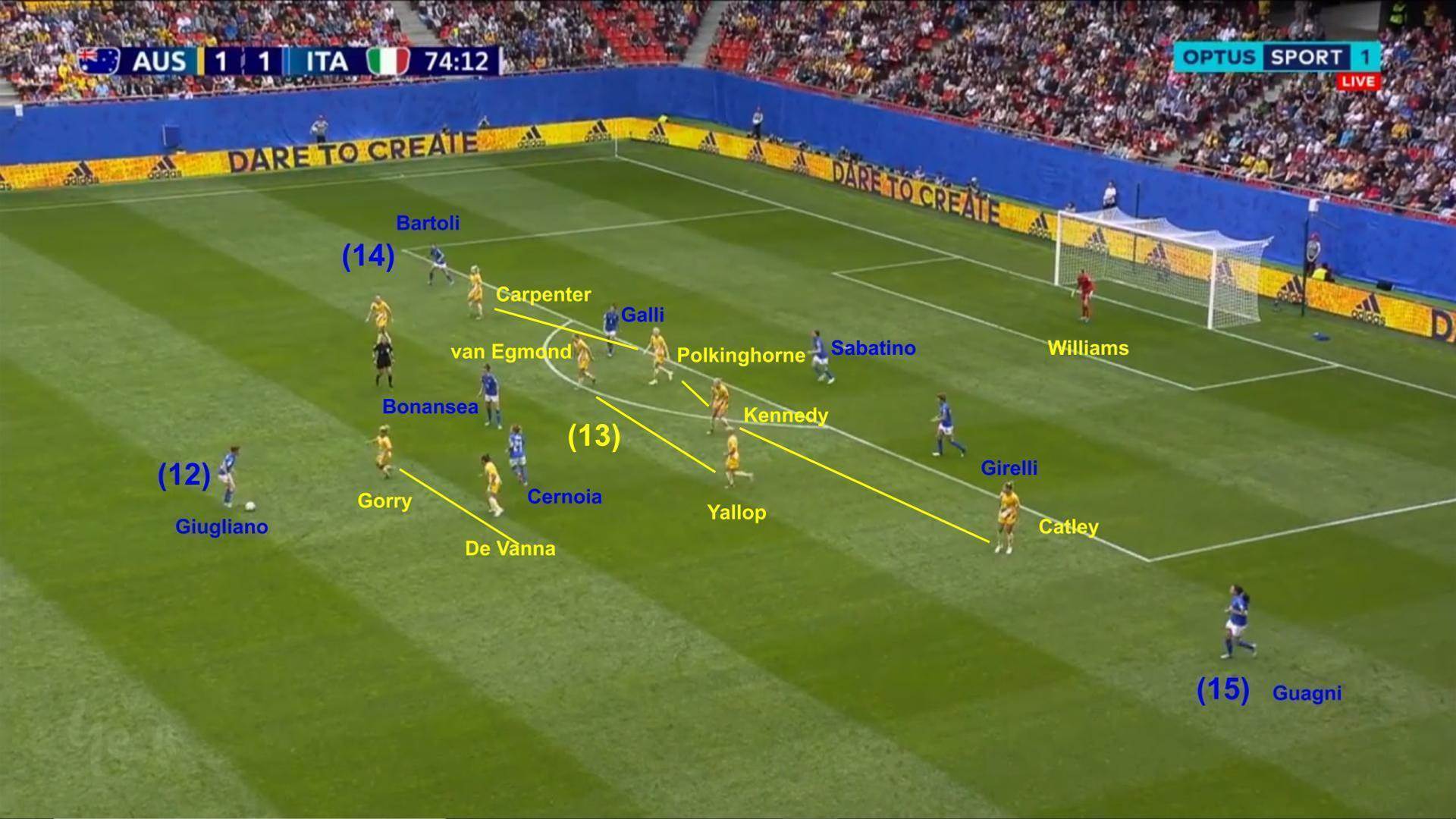With the dust settling on the Matildas opening FIFA Women's World Cup match, it's time to take an in-depth tactical review of the game.
This would continue into the second half, where despite some reshuffling of their lineup, Italy did not look like creating clear goalscoring opportunities.
It took an error from Clare Polkinghorne for Italy to draw level, with the centreback seemingly unaware of how close Bonansea was while Australia played out of the back. This lapse in concentration allowed Bonansea to steal the ball off Polkinghorne’s heavy first touch, and the Italian scored with ease past an exposed Lydia Williams.
Bonansea’s 56th-minute equaliser was very much against the run of play, with Italy not managing a shot on target from the 16th minute.
At 1-1, Italy grew in confidence and brought on experienced forward Daniela Sabatino to provide greater penetration. Whereas previously Italy’s forward pair of Ilaria Mauro and Cristiana Girelli drifted wide into the channels, Sabatino remained in central areas and provided a target for crosses and through balls.
As shown in the picture below, Italy are attacking down the right (9), with Sabatino’s presence as a central target (10) allowing Bonansea (11) to drift in from the left wing to work off her, and run in behind the Australian defence.
 In response, Australia tried to defend a bit deeper. Here, Italy’s playmaker Manuela Giugliano is on the ball (12), and Australia has adopted a compact, deep block (13). While this photo is an extreme example of their deeper position, it demonstrates Australia’s shift in attitude as the game progressed.
In response, Australia tried to defend a bit deeper. Here, Italy’s playmaker Manuela Giugliano is on the ball (12), and Australia has adopted a compact, deep block (13). While this photo is an extreme example of their deeper position, it demonstrates Australia’s shift in attitude as the game progressed.
Lisa De Vanna came on to add more pace on the counterattack, and Katrina Gorry (followed later Elise Kellond Knight) came on to stabilise the midfield. This also helped defend against the Italian fullbacks, who took up more advanced positions in the second half ((14) and (15)).

Australia began to regain a foothold in the game and looked to secure the draw. Unfortunately, Williams’ questionable decision to come for a high ball in the 95th minute, when plenty of Australian defenders were around to challenge for the cross, allowed Bonansea to score and Italy to pick up a somewhat flattering win.
This took away from what was actually a solid performance from Australia, who controlled the game for long spells and looked to have done enough to deserve a draw.
Australia looked cohesive in their attacking transition phases and created far more scoring opportunities than the Italians.
Considering both Italian goals came from two very avoidable individual errors, there remains a cause for quiet optimism in Australia’s remaining two games of the group stage. In particular, the characteristics of the Australian attackers are better suited towards playing on the break, and their pace and directness should cause Brazil problems in their next match.
The author is an experienced football coach, having coached over 200 games at the development and senior level. He has completed the FFA B Licence and runs the Facebook page "Tacticology", covering the NPLW Victoria.
Related Articles

'Timing not right': Montemurro's verdict on Matildas vacancy

Matildas: 'Fourth at the Olympics is honestly the worst place you could come'
.jpg&h=172&w=306&c=1&s=1)












